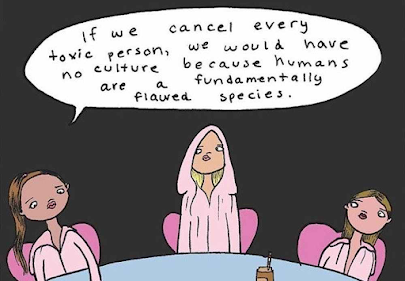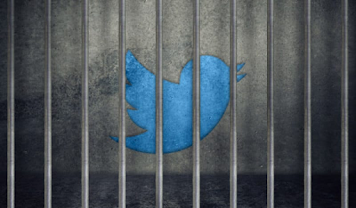
Last week, as I started walking in the corridors of social media, I reflected on the power of analogies to describe those digital spaces, their rules, and the emotions human beings could feel when interacting with other human beings and hosted content.
One analogy that came back frequently was the Hive Mind. At first, I thought this metaphor was essentially comparing Web 2.0 to a physical space hosting a group of people bringing their knowledge, ideas, and opinions and sharing them with others to bring new concepts and ideas. Yet, some of this week's readings helped to understand that the Hive Mind could actually refer to the "negative effect of an over populated Collective Intelligence, also known as Artificial Intelligence"(Living in a Connected World/The Hive Mind and Collective Intelligence). In other terms, the Hive Mind appears when the flow of ideas and opinions brought in a given environment reaches a saturation point, overwhelming the minds and thus preventing individuals to create their own opinions.
I represented my reflections on Collective Intelligence and the Hive Mind in the graphic below.
In short, I now picture anyone entering a social media (at least the most popular ones) with their mind and emotions being flooded with tweets, FB posts, Instagram stories, and other content from known and unknown individuals. All that information literally acts as pieces that combine to form a jigsaw we did not even ask for, but which subconsciously presents itself as our opinions and ideas. And none of us has seen it coming. This might be exaggerated and less likely relevant but this is intended to be, as I focus on a single aspect of social media, which are far more complex and obscure than that.
So, based on my understanding, if now all our social media have reached "the Hive Mind level", I am now wondering: how does the Hive Mind sustain itself? At some point, every living entity is fueled by something or someone, so, how does this work for Web 2.0? For me, one explanation resides in the presence of more powerful entities, those who understand how to benefit from this status quo and who manage to literally live from it. Yes, you read my mind, I am thinking of influencers and content creators.
In fact, the Wiki Book quoted above gave some illustrations of how influential individuals and organizations could play a critical role in political matters. You can read more about the example of the 2014 Scottish Referendum, and the fact that the winner was not the louder voice on social media, but rather the one with the ability to place banners "on top of profile pictures", influencing people by seeing others' political views on social media profiles.
I wanted to know more on that topic and thus dug a bit more to find a potential relationship between the Hive Mind and influencers. This led me to the "Depp-Heard trial", which was intensely discussed and followed on social media. The
article from Taylor Lorenz in The Washington Post is a great reading to reflect on the power of initially unknown individuals who gathered millions of views and followers for covering the trial on their blogs and personal profiles. These individuals, now viewed as critical influencers, were able to win thousands of dollars by feeding social media with more or less verified information, influencing people to take a side, without encouraging critical thinking and debate.
In this case and most likely in many other situations, the mind (and emotions) of millions of individuals populating the Hive was formatted even more.
So, is there a cure for the Hive Mind? Is there a way to reverse the phenomena and nurture Collective Intelligence without falling into the dark side of Web 2.0? I cannot say I have a solid plan in mind at the moment, and I have no doubt the solution is far from simple as this should have been already solved otherwise.
Yet, I believe that part of the escape plan would involve a mix of education, transparency, honesty, and rebellion.
Here are my thoughts on this intriguing and somewhat scary aspect of our digital world. Before I leave you with your own reflections, here is one last great resource I wanted to share about the Hive Mind that triggered more thoughts in me:
Tim Weninger's TedTalk in 2014.




Hi Marion,
ReplyDeleteBefore I even reached the end of your post, I found myself wondering "What comes after the hive mind"? Reading about the hive mind made me think of a common symptom of people working together in groups: group think. This occurs when a group begins to stifle creativity and fall into traps of simply agreeing with each other. This is detrimental to any creative thought, and can be hard to break out of. Groupthink can be avoided by allowing time for individual diverse thought before engaging as a team, but creating environments where people must think on their own before engaging with others in an online space seems difficult. I see this in practice in discussion boards where learners must post before seeing other's responses, but allowing this to be in practice on a more native and larger scale... that is something that I don't know the answer to.
Hi Missy M, great question!
DeleteI too really wonder how people can "think by themselves" as they navigate through Web 2.0. Your example of the discussion boards (as we experience on Canvas) was very impactful; I was not really aware of the intention, and sometimes I found this frustrating as I am not sure I got the initial prompts right (not English native). But the strategy totally makes sense. I think that, in order to keep an "non-influenced" mindset (if that is only possible), one idea would be to provide such clear guidelines on communities we can find online, so that we at least are encouraged to think critically.